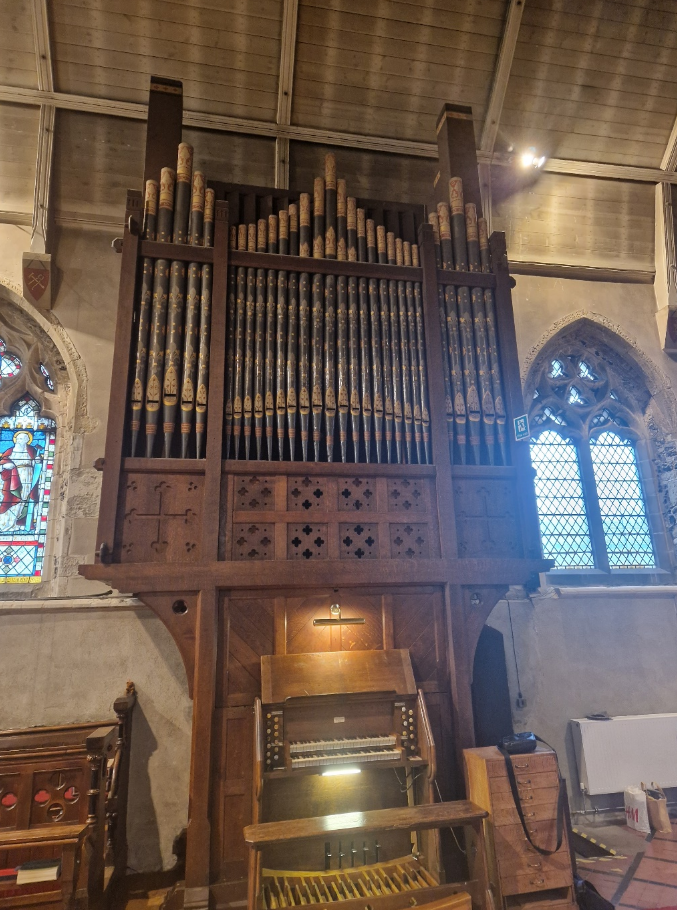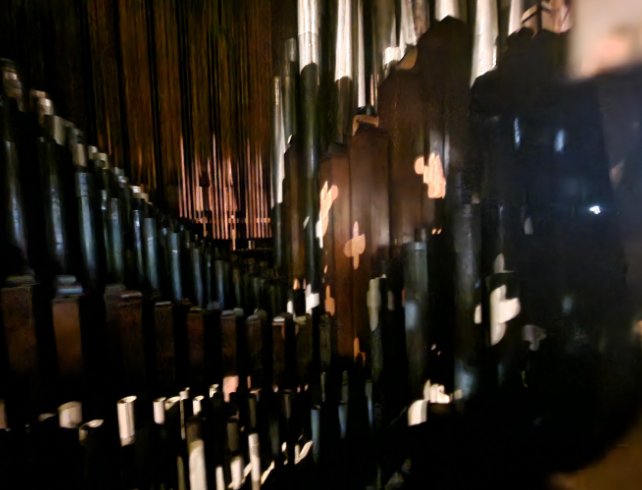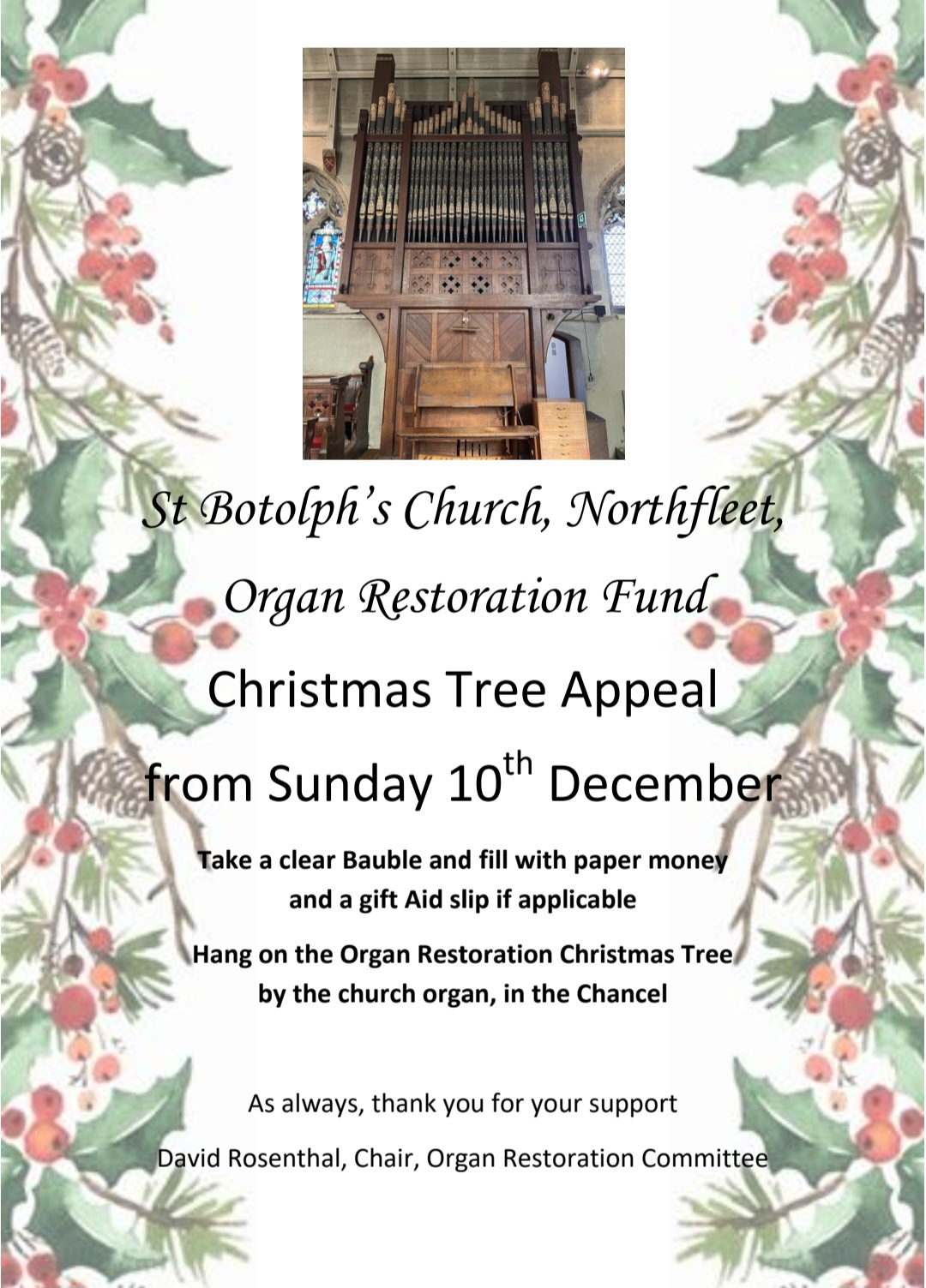Some information about our 1863 Gray & Davison Organ
The organ, installed in 1863. Organs were increasingly seen as a vital components of Anglican worship at this time. Gray and Davison was one of the great organ manufacturers of the period, having extensive premises near the present Euston Station. Rumour had it that our instrument was purchased ‘at the Great Exhibition’ (1852) but (if this has any truth) interest is more likely to have arisen from Great International Exhibition of 1862 (which had a distinctive musical component) .
What we do know is that the instrument was originally purchased for £360. Its installation in 1836 is shown in Gray and Davisons’ Work Books. It had to fit in the chancel without masking the altar or East window; a hole had to be excavated to accommodate the bellows beneath the instrument.
 Figure 1 The Organ's Case and Console
Figure 1 The Organ's Case and Console
The organ has an attractive Gray & Davison 'medieval' case and richly decorated front display pipes, typical of the firm's work. Although relatively small for the building, the organ’s sound is colourful, clear, and versatile. It responds well to music of most musical periods. It has been well maintainedn and usually gives good service. The instrument has over 1,000 pipes, most of which are mounted within the case.
 Figure 2 Inside the Grand Choir Organ, looking at some of the pipes, and with sunlight making patterns through the holes in the case.
Figure 2 Inside the Grand Choir Organ, looking at some of the pipes, and with sunlight making patterns through the holes in the case.
The case, pipes, and mechanism are almost all as they would have been in 1863, although inevitably there have been some repairs over the years. Unusually for an organ of this age, very little has been done to change or ‘improve’ it – except for the provision of electric lights to replace the original candles, and an electric blower to save a member of the choir needing to pump wind by hand. One rank of pipes seems to have been changed, but this may well have been done near to the time of installation. At some point, the painted Victorian decoration to the pedal pipes was overpainted in brown. We hope in the future to carry out some historically informed restoration and cleaning to all parts of the organ.
Ours is the largest of a group of only three Gray & Davison instruments from the early 1860s, having ‘Grand Swell’ and ‘Grand Choir’ divisions (rather than the more usual ‘Swell’ and ‘Great’). Our organ’s smaller sibling has been preserved at St John the Baptist, Huntley, Gloucestershire. The third member of the family (very similar to our own organ) served in Clerkenwell up to 1906 but by 2010 was said to be ‘unplayable’ in its new home in Edmonton.
Technical details for organ enthusiasts
STOP LIST
Grand Swell Organ: Double Diapason 16’, Open Diapason 8’, Keraulophon 8’, Clarionet flute 8’, Principal 4’, Fifteenth 2’, Mixture III, Cornopean 8’, Oboe 8’.
Grand Choir Organ: Open Diapason 8’, Concert Flute 8’, Dulciana 8’, Vox Angelica 8’, Flute 4’, Principal 4’, Twelfth 2 2/3’, Fifteenth 2’.
Pedal Organ: Grand Bourdon 16’, Grand Open Diapason 16’.
Couplers: Swell Manual to Choir, Swell Manual to Pedals; Choir Manual to Pedals, Swell Octave.
Combination pedals: Three to Swell, Two to Choir
OTHER INFORMATION
19 speaking stops. Mechanical action throughout.
Pedal compass: C to e1. Manuals compass: C to f3.
National Pipe Organ Register: D00299.
